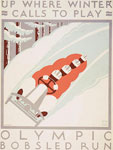The Contemporary Museum presents art created after 1940. It is the only museum in Hawaii to focus solely on contemporary art. The museum gardens were designed between 1928 and 1941 by K. I. Inagaki. One of the two structures which houses the museum, the Spalding-Cooke House was originally a 1925 residence. All exhibits are temporary. Works selected address a variety of styles, geographical origins, and dates of creation. Artists represented within the collection include Josef Albers, Louise Nevelson, Jim Dine, Jasper Johns, Richard Diebenkorn, William Wegman, and Edward and Nancy Kienholz. Works include paintings, fiber and textile arts, assemblage, wood works, glass works, ceramics, photography, film, watercolors, drawings, metal works, and prints.
The museum offers exhibits, guided tours, guided student tours, guided garden tours, educational programs for students, research library access, artist talks, children's art classes, traveling trunks, teacher workshops, and a cafe. The library is open by appointment only, and many of the materials are available for circulation. All student options require at least two weeks advance notice. Reservations are recommended for the cafe.
